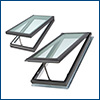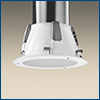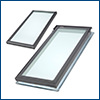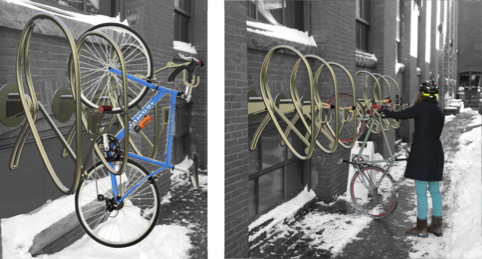There is no better season to celebrate window film and its amazing benefits than the holiday season! Between energy savings and health benefits, we really can’t find a reason why you shouldn’t invest in window film in the new year. Thanks to the International Window Film Association, here are 10 reasons we are celebrating window film to ring in 2017!
- Window film can help cut home cooling costs: reduce the heat in your home with window film. Your central air system shouldn’t have to work so hard.
- Go “green” or go home: did you know that many neighborhoods offer incentives for green projects? You can even receive tax reductions for window film installation.
- Say goodbye to glare: don’t you hate when there’s a glare on the television or through the window? With window film, glare is never a problem.
- Protect your home and your family: you never know what could happen. Whether severe weather strikes, or the neighbor’s lawnmower throws a rock at your window, window film can stop the glass from shattering.
- Alternative to window replacement: wanting to save energy in your home but don’t want to invest in new windows? Try window film instead—it’s less expensive!
- UV rays penetrate your home and car windows: however, with window film, you’re protected. The most harmful UV rays are blocked by window film.
- Customize, customize, customize: give your windows a sleek look with your choice of window film. Whether you want something tinted or transparent, window film can help give your home or office a look of its own.
- Sight for sore eyes: did you know that untreated windows only protect your eyes from 25 percent of UV rays? Window film can increase that percentage!
- Protect your investments: home furnishings aren’t cheap. Protect them with a layer of window film and keep them from undergoing sun damage.
- Large, small, high, or low, window film doesn’t discriminate: regardless of the size or location of your windows, window film can be installed no matter what!
Save money and energy, protect your home and family, and add some design and aesthetic to your home. There’s no downside to window film, so celebrate with us and put it on your to-do list for the new year!


 Go ahead and plan out your meal by thinking about what
Go ahead and plan out your meal by thinking about what  Using ceramic or glass cooking wear will allow you to turn your oven down about 25 degrees and achieve the same results. Ceramic and glass retain heat very well, so your dishes will continue the cooking process even when they’re taken out of the oven. Also, stay mindful of your microwave, toaster oven, and slow-cooker. These devices use a lot less energy than your oven and stovetop, and can produce the same products without overworking your other appliances. That being said, make sure you resist the temptation to peek inside your slow-cooker. Each time the lid is removed, heat is released and can add about 25 minutes to cooking time. This rule goes for your oven as well!
Using ceramic or glass cooking wear will allow you to turn your oven down about 25 degrees and achieve the same results. Ceramic and glass retain heat very well, so your dishes will continue the cooking process even when they’re taken out of the oven. Also, stay mindful of your microwave, toaster oven, and slow-cooker. These devices use a lot less energy than your oven and stovetop, and can produce the same products without overworking your other appliances. That being said, make sure you resist the temptation to peek inside your slow-cooker. Each time the lid is removed, heat is released and can add about 25 minutes to cooking time. This rule goes for your oven as well! There’s nothing worse than having a full belly and cleaning the dishes of your entire family. But what if we told you that your traditional way of cleaning up after the Thanksgiving meal is not only wasting energy and water, but also wasting your time? A lot of people tend to rinse their dishes fully before putting them in the dishwasher. This actually
There’s nothing worse than having a full belly and cleaning the dishes of your entire family. But what if we told you that your traditional way of cleaning up after the Thanksgiving meal is not only wasting energy and water, but also wasting your time? A lot of people tend to rinse their dishes fully before putting them in the dishwasher. This actually 
 Tubular
Tubular Fixed
Fixed HomeStyle® Energy mortgage is a new Fannie Mae option that allows borrowers to finance energy-efficient improvements, such as insulation or window enhancements. Homeowners can borrow up to 15 percent of the appraised, as-completed value of the home in order to purchase the upgrades. Financing is available to both those looking to purchase homes and those who want to update their current homes.
HomeStyle® Energy mortgage is a new Fannie Mae option that allows borrowers to finance energy-efficient improvements, such as insulation or window enhancements. Homeowners can borrow up to 15 percent of the appraised, as-completed value of the home in order to purchase the upgrades. Financing is available to both those looking to purchase homes and those who want to update their current homes. HomeStyle Energy mortgage is available from all approved Fannie Mae lenders. Borrowers can finance up to $3,500 in upgrades without an energy report, or upgrades above this limit with an energy report. Lenders are required to place funds into an escrow account.
HomeStyle Energy mortgage is available from all approved Fannie Mae lenders. Borrowers can finance up to $3,500 in upgrades without an energy report, or upgrades above this limit with an energy report. Lenders are required to place funds into an escrow account. According to Fannie Mae senior vice president and chief credit officer, Carlos Perez, “HomeStyle Energy mortgage will be particularly helpful to borrowers who want to pay off debt for existing energy improvements. It will also benefit homeowners who want to make their home more comfortable and efficient.”
According to Fannie Mae senior vice president and chief credit officer, Carlos Perez, “HomeStyle Energy mortgage will be particularly helpful to borrowers who want to pay off debt for existing energy improvements. It will also benefit homeowners who want to make their home more comfortable and efficient.” In addition to making these loans available, Fannie Mae also makes them more affordable than typical home equity lines of credit, unsecured loans or vendor loans. Although most
In addition to making these loans available, Fannie Mae also makes them more affordable than typical home equity lines of credit, unsecured loans or vendor loans. Although most  The winning design, submitted by Julia Hanson, a former urban planning student, and Jeff Olinger, an architect, built on previous rack designs to address the specific conditions of Cambridge’s Kendall Square. The team’s
The winning design, submitted by Julia Hanson, a former urban planning student, and Jeff Olinger, an architect, built on previous rack designs to address the specific conditions of Cambridge’s Kendall Square. The team’s  The flycycle rack holds two bicycles on each frame in less space than the typical
The flycycle rack holds two bicycles on each frame in less space than the typical 
 The ultimate winners in the Climate CoLab series will be the inhabitants of our planet. Climate CoLab breaks down complex problems of climate change into smaller, more manageable ones, before asking its 130,000 community members to submit proposals. MIT plans to piece together the winning solutions to address the much broader issues impacting climate change. Anyone can join or participate in the process.
The ultimate winners in the Climate CoLab series will be the inhabitants of our planet. Climate CoLab breaks down complex problems of climate change into smaller, more manageable ones, before asking its 130,000 community members to submit proposals. MIT plans to piece together the winning solutions to address the much broader issues impacting climate change. Anyone can join or participate in the process. Your best choice depends on your budget, space, and to a lesser degree, your sense of style. Whether you search online or head to your local gardening shop, you should find a good selection available. Be careful to check the measurements of both the barrel and the space it will occupy. Prices typically start at more than $100. If cost is an issue, you can find directions for creating your own at
Your best choice depends on your budget, space, and to a lesser degree, your sense of style. Whether you search online or head to your local gardening shop, you should find a good selection available. Be careful to check the measurements of both the barrel and the space it will occupy. Prices typically start at more than $100. If cost is an issue, you can find directions for creating your own at  Since a typical summer rainstorm can easily fill most rain barrels and cause overflow, make sure you place yours in an area that can effectively drain water – without ruining your home’s foundation in the process. Some barrels have overflow spouts allowing you to direct the drainage.
Since a typical summer rainstorm can easily fill most rain barrels and cause overflow, make sure you place yours in an area that can effectively drain water – without ruining your home’s foundation in the process. Some barrels have overflow spouts allowing you to direct the drainage. The captured water needs to be easily accessible. In most cases, this will mean dunking a watering can into the barrel. If your barrel has a spigot, make sure a reasonably sized can will fit underneath the valve.
The captured water needs to be easily accessible. In most cases, this will mean dunking a watering can into the barrel. If your barrel has a spigot, make sure a reasonably sized can will fit underneath the valve. It’s important to have some type of screen closure covering the top of your rain barrel – preferably one that latches. The goal is to keep mosquitoes out and children safe. Don’t create an environment where mosquitoes can lay eggs, or children could endanger themselves. You’ll find
It’s important to have some type of screen closure covering the top of your rain barrel – preferably one that latches. The goal is to keep mosquitoes out and children safe. Don’t create an environment where mosquitoes can lay eggs, or children could endanger themselves. You’ll find  Even a little water collection is better than none. Returning groundwater to the ground – while bypassing our overworked sewage system – is a win-win for the environment and its inhabitants – especially those who like to flush their toilets frequently.
Even a little water collection is better than none. Returning groundwater to the ground – while bypassing our overworked sewage system – is a win-win for the environment and its inhabitants – especially those who like to flush their toilets frequently. When many buildings in a community have cool roofs, it can lesson what is called the “urban heat island effect,” which is the phenomenon of buildings soaking up the sun’s radiation and then re-radiating that heat after sundown. According to the
When many buildings in a community have cool roofs, it can lesson what is called the “urban heat island effect,” which is the phenomenon of buildings soaking up the sun’s radiation and then re-radiating that heat after sundown. According to the  Many types of cool roofs are the same price as standard roofs and some utility companies offer rebates. Beyond that, you’ll enjoy savings from a lower air-conditioning bill year after year. You can also receive up to $500 in a federal tax credit for a cool roof.
Many types of cool roofs are the same price as standard roofs and some utility companies offer rebates. Beyond that, you’ll enjoy savings from a lower air-conditioning bill year after year. You can also receive up to $500 in a federal tax credit for a cool roof.  There are many different cool roof systems for both existing and new roofs. They all use thick coatings with reflective pigments. Some also offer restorative features and water protection. The Cool Roof Rating Council is a nonprofit organization that was created to conduct third-party tests and give accurate ratings on cool roof systems. You can search their
There are many different cool roof systems for both existing and new roofs. They all use thick coatings with reflective pigments. Some also offer restorative features and water protection. The Cool Roof Rating Council is a nonprofit organization that was created to conduct third-party tests and give accurate ratings on cool roof systems. You can search their  You can also use reflective paint on your exterior walls to cool your house – especially if you live in a warm climate. These “cool paints” are on the Federal Energy Management Program’s Promising Technologies List, which prioritizes technologies that help save energy but are underused.
You can also use reflective paint on your exterior walls to cool your house – especially if you live in a warm climate. These “cool paints” are on the Federal Energy Management Program’s Promising Technologies List, which prioritizes technologies that help save energy but are underused. From “The Quickest Ever Slideshow on Global Warming” to fun facts, this colorful site is filled with engaging activities and information. To show kids how they can save energy every day, it features a typical kid’s bedroom with interactive stars on items (click on “You Can Make Big Changes”). When you click on different stars, a window opens up to show how you can save energy with that particular item. Another neat feature is a section for parents and teachers (click on any internal page to see the gray “Parents & Teachers” tab on the bottom of the right side of the page) where you can download games and activities.
From “The Quickest Ever Slideshow on Global Warming” to fun facts, this colorful site is filled with engaging activities and information. To show kids how they can save energy every day, it features a typical kid’s bedroom with interactive stars on items (click on “You Can Make Big Changes”). When you click on different stars, a window opens up to show how you can save energy with that particular item. Another neat feature is a section for parents and teachers (click on any internal page to see the gray “Parents & Teachers” tab on the bottom of the right side of the page) where you can download games and activities. This website from the U.S. Energy Information Administration also acts as a resource for teachers, providing a whole range of
This website from the U.S. Energy Information Administration also acts as a resource for teachers, providing a whole range of  The U.S. Environmental Protection Agency offers “A Student’s Guide to Global Climate Change” on this informative website. Kids are invited to go on
The U.S. Environmental Protection Agency offers “A Student’s Guide to Global Climate Change” on this informative website. Kids are invited to go on  Basically, that would be the additional annual cost to U.S. viewers’ utility bills if everyone switched to UHD TVs without the energy-efficient bells and whistles. However, there are some UHD models, such as
Basically, that would be the additional annual cost to U.S. viewers’ utility bills if everyone switched to UHD TVs without the energy-efficient bells and whistles. However, there are some UHD models, such as  If you’re thinking about buying a UHD TV, the simplest thing you can do is buy an ENERGY STAR certified one. You can shop using filters on
If you’re thinking about buying a UHD TV, the simplest thing you can do is buy an ENERGY STAR certified one. You can shop using filters on  Cree’s new 9.5-watt LED Soft White looks just like a traditional bulb. It fits into standard-size outlets. And it operates just as a traditional bulb would – lights immediately in all directions and dims without buzzing. But it uses up to 84% less energy, which earned it the trusted
Cree’s new 9.5-watt LED Soft White looks just like a traditional bulb. It fits into standard-size outlets. And it operates just as a traditional bulb would – lights immediately in all directions and dims without buzzing. But it uses up to 84% less energy, which earned it the trusted 